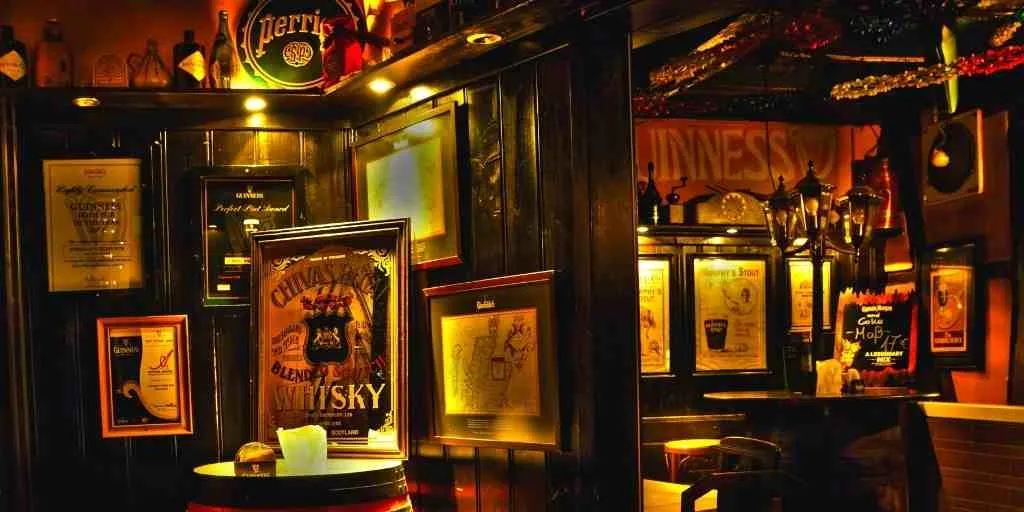Have you ever wondered about what you’re drinking all those times you’ve been in a bar or restaurant? Ever sat there, rolling the stem of a cocktail glass through your fingertips or studying the label on a beer bottle, and thought: where does it come from? What goes into it? Why was it made? Take a look at the background of some household brand names in the drink industry – you may be surprised.
Tuaca
The Renaissance gave us Leonardo Da Vinci’s famed studies of human anatomy and Michelangelo’s David sculpture. Still, many a drinker and bartender will argue that the greatest thing to come out of this period of seismic change was Tuaca. This delicious liqueur was created more than five hundred years ago for the ruler of the Italian city of Florence, Lorenzo de’ Medici (or ‘Lorenzo the Magnificent). With its elegant, carefully balanced mixture of fine brandies, vanilla essences and Mediterranean spices, Tuaca is supposed to represent de’ Medici’s love of the arts and culture, and this ancient recipe – originally called Brandy Milk, and long thought lost – was rediscovered in 1938 by brothers-in-law Gaetano Tuoni and Giorgio Canepa of Livorno in Italy, who named the drink Tuoca. American soldiers stationed in Livorno discovered Tuoca’s delights during World War II. It eventually found its way to U.S. shores, where, in the Sixties, a San Franciscan liquor store owner began stocking bottles under its new – and easier to pronounce – the name of Tuaca. Despite the historic Livorno production plant closing in 2010, Tuaca remains in production in the U.S. state of Kentucky and is a firm favourite with bar keeps, drinkers and even coffee enthusiasts, and can be found in cocktails such as the Mediterranean Manhattan, enjoyed neat on the rocks, or even added to desserts.
Jägermeister
Famed the world over for its quality and undeniable potency, it comes as no surprise to learn that the ever-reliable get-blitzed-quick drink of choice for many – the herbal liqueur Jägermeister – has its origins in a country notable for its craftsmanship and dependability: Germany. What may be a surprise is its history. The company that would eventually become famed for Jägermeister began life as a vinegar production plant in the German town of Wolfenbüttel, where its founder Wilhelm Mast decided to capitalise on the local mining industry’s demand for rock-cooling vinegar. When Wilhelm passed away, his son Curt took the reins of the family business in 1918 and steered it in a wholly new direction – a direction which would see him court the friendship of high-ranking government officials such as Herman Göring, who, like Mast, was a keen hunter. Göring’s influential position as Germany’s interior minister had seen him create regional ‘Hunting Masters’, and Mast has bestowed the honour of the title of Hunting Master – or Jägermeister – and frequently held hunting parties for the National Socialist hierarchy. Mast’s new liqueur, a blend of 56 herbs and spices which he had been perfecting for years – and the exact recipe for which is still secret – was often drunk at these parties and was often referred to as ‘Göring-Schnapps’ – until 1935, when it was rebranded as the Jägermeister we all know and enjoy. The iconic bottle and its label, which feature distinctive lettering and a picture of the legendary Hubertus stag with a glowing cross between its antlers, are trademarked and have changed little in eight decades. Jägermeister hit the U.S. in 1971 and became increasingly popular, with the last decade seeing a huge increase in sales and status – its iconic branding can be seen at global rock festivals and sports events, while Surfer on Acid, Jägerita and Jägerbombs (Jägermeister and Red Bull) have entered drinkers’ lexicon around the world.
Bailey’s Irish Cream
Mention Baileys Irish Cream – or just ‘Baileys’ to its fans – and many people will think of rolling Irish fields, lilting Gaelic music and a drinks bottle with a label personally signed off by an owner – Mr R. A. Bailey – whose small company produces the smooth, malty drink famed the world over for its secret recipe mixture of whiskey and cream and which has a shelf life of two years. The truth, however, is quite different – and nowhere near as romantic. While the world’s best-selling liqueur is authentically Irish in terms of production and ingredients – with plants in Dublin and Newtownabbey and tens of thousands of cows roaming the Republic of Ireland countryside providing milk – there is, in fact, no Mr Bailey (the signature is fake). The drink’s name was dreamt up by suits in a London office, which overlooked the nearby Bailey’s Hotel. Baileys Irish Cream was created in the early Seventies by Gilbeys of Ireland, a part of the much larger International Distillers & Vintners, as they sought to break into the international market. In 1974 Baileys Irish Cream was launched with a careful blend of strong design – Celtic symbols and an attractive colour palette adorn the bottle – deliberately meant to evoke the land of its origin and a feeling of tradition. The company has never looked back: the Baileys brand is now part of the Diageo drinks conglomerate, a massive company that counts Johnnie Walker and Guinness amongst its products. It has won numerous awards and lately branched out with alternate flavours such as mint chocolate and orange truffle. Cocktail enthusiasts have used Baileys in a variety of concoctions, including the Orgasm (mixed with Kahlua, Amaretto and whipped cream) and the B-52 shooter.
Guinness Beer
One famous Guinness advertising slogan from the Nineties read simply: ‘Good things come to those who wait.’ This was a nod to the length of time – nearly a full two minutes – it takes bartenders to pour the perfect pint of ‘The Black Stuff, but it could also refer to the drink’s creator, Arthur Guinness, who in 1759 signed a 9,000-year lease on a derelict brewery in Dublin known as St. James’s Gate. Guinness, clearly not a man to be hurried and convinced that time would bring greatness to his new dry stout, spent the next decade perfecting the recipe – a mixture of water, barley, roast malt extract, hops, and brewer’s yeast – that would become the number one stout in the world. In 1769 the first shipment of six and a half barrels made its way to the United Kingdom. From that point, the Guinness brand was unstoppable, with its exports growing until its reach became global, with current annual sales now topping 850 million litres: 2007 alone saw a staggering 10 million glasses of the black stuff poured every day. There have been wobbles along the way to worldwide prominence – in the Seventies, sales flagged to the point that a relaunch and new recipe were required. At the same time, the Eighties saw the brand’s ‘Irishness’ affected by ‘The Troubles’, particularly the Irish Republican Army’s bombing campaign in mainland Britain. Guinness rode the rough waters, though, and under its new owner, Diageo has become synonymous with Ireland, especially St. Patrick’s Day celebrations. Now brewed in 49 countries, and with the St. James’s Brewery still going strong, Arthur Guinness’ ‘black stuff’ celebrated its 250th birthday in 2009 and showed no sign of losing its popularity amongst drinkers.
Corona Beer
Corona is a true marketing success and a prime example of an ideal moment captured, packaged and sold to the masses. From its trademark slice of lime or lemon wedged into the neck of the bottle to the iconic Crown logo, Corona has cleverly made itself synonymous with relaxing, free-spirited good times – picture a surfer supping a cold golden one while looking out at fine blond sand, turquoise sea and endless blue skies – when in fact it is a product of a huge multinational conglomerate. First brewed in 1925 by Cervecería Modelo – Mexico’s foremost producer and exporter of beer – it has exploded in popularity in the last few decades to the point where not only is it the biggest beer in its country of origin, it is one of the top-five selling beers around the globe (it is exported to 150 countries and counting) and Mexico’s largest export brand alone. Its variants, Corona Extra and Corona Light are hugely popular in the United States, and Extra is the top-selling imported beer (via Modelo’s affiliate Constellation Brands). Crisp and refreshing on its own, Corona is also used in cocktails such as the Coronita Margarita (an upturned bottle of the beer left to drip into a Margarita) and the Mexican Boilermaker (a healthy glass of tequila dropped into a pint of Corona). At the same time, the brand continues towards world domination with the sponsorship of numerous high-profile sporting and music events.





